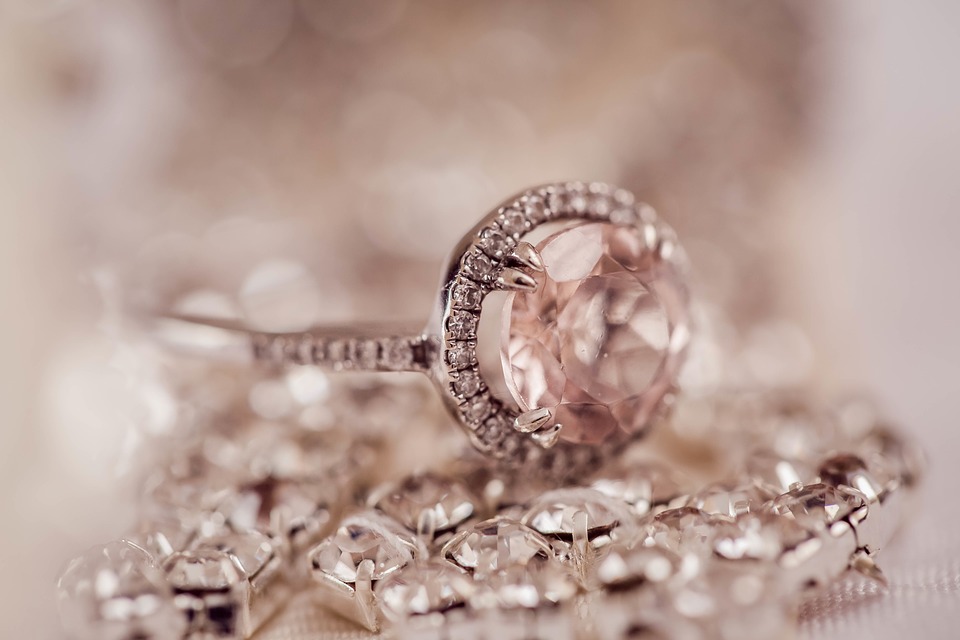
Diamond – a sparkling, unique stone that is the dream of many women. It is the hardest mineral in the world, making it very durable and able to withstand high temperatures. Thanks to its wonderful properties and dazzling sparkle, it has become a popular element in jewelry, and its combination with gold creates a piece of immortal jewelry. Here’s a short guide to help you get the right diamond ring!
Whether you’re thinking of buying diamond jewelry for yourself or want to gift it to a loved one, it’s worth knowing what to look out for when shopping. The main diamond parameters that affect price are the so-called 4Cs: carat, color, clarity, and cut.
Carat:
The most well-known factor in determining a diamond’s value is its weight, measured in carats. As a rule of thumb, the larger the carat, the higher the value, with one carat (if the other 3Cs are of good quality) being the pitch limit, usually only broken after several years of marriage, and intended to express appreciation for a partner. For wedding rings, on the other hand, the average weight of a diamond is usually between 0.30 and 0.50 carats.
Colour:
Another factor that determines the value of a diamond is the color factor. The term ‘color’ does not mean a distinction between blue, black, or brown diamonds (yes, they exist), but rather its purity based on the light refracted by the diamond. For instance, a white or colorless diamond shines brighter than a lightly tinted diamond. The distinction between colors is based on the alphabet, where D stands for extremely subtle white, while stones marked J already appear yellowish. Since a solitaire ring lives by the sparkle of its stone, and you want to score points with your partner with a sparkly stone, in particular, it’s advisable to use at least one F or G color-coded stone for the ring.

Clarity:
Diamonds are natural products and, as such, are rarely perfect. Many stones have what are known as inclusions, which appear as black dots within the stone when visible to the naked eye because light refracts differently here. To take this peculiarity into account in the stone’s value, a purity grade is used, ranging from flawlessly pure (IF) to coarse alloys (P3) and progressively measuring the diamond’s purity. Like the “color” factor, you should rely on a high “clarity” quality factor for your solitaire to maintain the stone’s brilliance. It is therefore recommended not to buy a stone below (SI) quality.
Cut:
The last 4C’s stand for cut and describe the type of cut (e.g., brilliant, princess or cussion). This criterion is fundamental because rough diamonds appear dull in their natural state and only acquire their brilliance with the right cut. Diamond cut is a real craft even today and can be done well or poorly. On the one hand, this gives the diamond an additional individuality, but on the other hand, it can also have a devastating effect on the diamond’s brilliance. If a diamond is not cut to the correct proportions, it will not shine properly, even as a flawless diamond.
Once you have taken these diamond characteristics into account, focus on the metal you want to combine the diamond with your jewelry. Classic lovers will end up with a timeless combination of diamond and yellow gold; younger generations may appreciate white gold, and if you’re looking for something new, try modern rose gold.

Suitable Events
Diamond jewelry symbolizes luxury and is therefore suitable for the most formal occasions such as balls, weddings, or graduations. At the same time, decent diamond earrings and pieces in the form of minimalist diamond rings can be worn every day and still be unusual.
If you still haven’t got yours yet and you’re looking for high-end jewelry pieces for your next milestone or special event, visit MR GOLD Creation Jewelry LLC, Kissimmee, Florida. They also offer exquisite custom designs and stone setting services. Contact them for more information!
